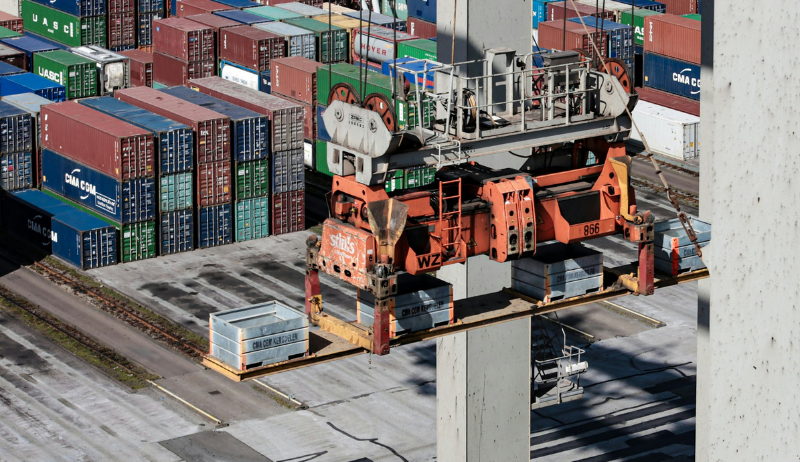Export Volume & Capacity of Indonesia’s Tuna Industry: A Growing Global Power
October 14, 2024

Indonesia’s tuna industry is one of the largest contributors to the country’s economic growth, especially in the seafood sector. With vast marine resources and a strategic geographical location, Indonesia has become a global powerhouse in tuna exports. This blog will provide an in-depth look at the export volume and capacity of Indonesia’s tuna industry, highlighting the key drivers behind its success and the challenges it faces.
1. Indonesia’s Tuna Industry at a Glance
As the world’s second-largest tuna producer, Indonesia’s tuna industry plays a critical role in global seafood supply. Tuna, especially species like skipjack, yellowfin, bigeye, and albacore, are among Indonesia’s top export commodities.
In 2022, Indonesia’s tuna exports reached approximately 200,000 metric tons, generating significant revenue and strengthening its position in the global seafood market. The country is responsible for roughly 16% of the world’s tuna supply, and with its extensive Exclusive Economic Zone (EEZ) that covers some of the richest fishing grounds in the world, Indonesia is well-positioned to maintain and grow its tuna export capacity.
2. Key Export Destinations
Indonesia exports tuna to several major markets, with the United States, Japan, and the European Union being the largest consumers of Indonesian tuna products. These markets import a wide variety of tuna products, including:
- Canned tuna (primarily skipjack)
- Frozen tuna loins and fillets (yellowfin and bigeye)
- Fresh tuna (primarily for sushi and sashimi markets)
The Middle East and China are also growing markets for Indonesian tuna, as demand for protein-rich, healthy seafood increases in these regions. The country’s competitive pricing and strategic trade agreements with various nations make Indonesia an attractive source of tuna for importers worldwide.
3. Export Volume by Tuna Species
The export volume of Indonesia’s tuna is dominated by skipjack tuna, which is used predominantly for canned tuna production. Skipjack is the most abundant tuna species in Indonesian waters and accounts for over 50% of the country’s total tuna exports.
Other key tuna species exported include:
- Yellowfin tuna, which is often shipped fresh or frozen to premium markets, particularly in Japan and the U.S.
- Bigeye tuna, prized for its high-quality meat used in sashimi and sushi dishes.
- Albacore tuna, typically processed into loins and fillets and exported to markets in Europe and the U.S.
These tuna species are harvested using a variety of sustainable fishing methods, including pole-and-line fishing, which minimizes bycatch and supports long-term resource conservation.
4. Processing and Export Capacity
Indonesia’s tuna processing industry has significantly expanded over the years to meet growing global demand. The country boasts a wide network of processing plants, with many facilities capable of producing a diverse range of tuna products, including:
- Canned tuna for retail markets
- Frozen loins and fillets for high-end markets
- Value-added products, such as tuna steaks and ready-to-eat meals
Indonesia’s capacity to process and export large volumes of tuna is one of the key reasons behind its success. The country has more than 150 tuna processing plants, many of which are located in areas with easy access to ports, ensuring efficient handling and shipping of tuna products.
These plants adhere to international food safety standards, including HACCP and BRC Global Standards, ensuring that exported tuna meets the stringent requirements of markets like the EU and the U.S.
5. Sustainability Initiatives and Export Growth
One of the driving factors behind Indonesia’s growing tuna export volume is its commitment to sustainable fishing practices. With increasing pressure from global markets to source seafood responsibly, Indonesia has implemented several measures to ensure the long-term viability of its tuna stocks, including:
- Fishing quotas to prevent overfishing of key tuna species.
- The establishment of Marine Protected Areas (MPAs) to conserve critical habitats for tuna and other marine species.
- The adoption of pole-and-line fishing and FAD (Fish Aggregating Device) free fishing practices to reduce bycatch and preserve ecosystem health.
Indonesia’s growing number of MSC (Marine Stewardship Council) certified tuna fisheries has further strengthened its position in international markets, particularly in the EU and the U.S., where consumers and retailers are increasingly demanding sustainably sourced seafood.
As a result, Indonesia’s sustainable fishing practices are not only helping preserve marine biodiversity but are also fueling export growth by aligning with the values of eco-conscious consumers.
6. Challenges Facing the Industry
Despite its impressive growth, Indonesia’s tuna export capacity faces several challenges, including:
- Illegal, Unreported, and Unregulated (IUU) Fishing: IUU fishing continues to threaten the sustainability of Indonesia’s tuna stocks and tarnishes the industry’s reputation. The Indonesian government has ramped up efforts to combat IUU fishing, including tighter regulations and increased patrols, but the problem persists.
- Climate Change: Rising ocean temperatures and shifting marine ecosystems may impact tuna populations, potentially affecting Indonesia’s fishing capacity in the long term.
- Infrastructure Development: While many processing plants in Indonesia meet international standards, some fishing communities still face issues related to infrastructure, such as inadequate cold storage and transportation, which can hinder the industry’s ability to maximize its export potential.
7. Future Outlook
Looking forward, Indonesia’s tuna export volume and capacity are expected to continue growing as the country improves its infrastructure and strengthens its sustainability efforts. With increasing global demand for tuna products and a shift toward responsible seafood sourcing, Indonesia is well-positioned to expand its market share.
In addition to investing in more sustainable fishing methods, the Indonesian government is also focusing on developing aquaculture to reduce pressure on wild tuna stocks and increase export capacity. This diversification could help Indonesia meet future global seafood demands while protecting its marine resources.
Conclusion
Indonesia’s tuna industry is a critical part of the country’s economy and a key player in the global seafood trade. With its vast marine resources, growing export capacity, and commitment to sustainable fishing practices, Indonesia is poised to remain a leading exporter of tuna for years to come. Despite challenges, the country’s strategic approach to managing its tuna stocks and increasing processing capabilities ensures it will continue to be a major supplier to the world’s seafood markets.

 English
English Chinese
Chinese